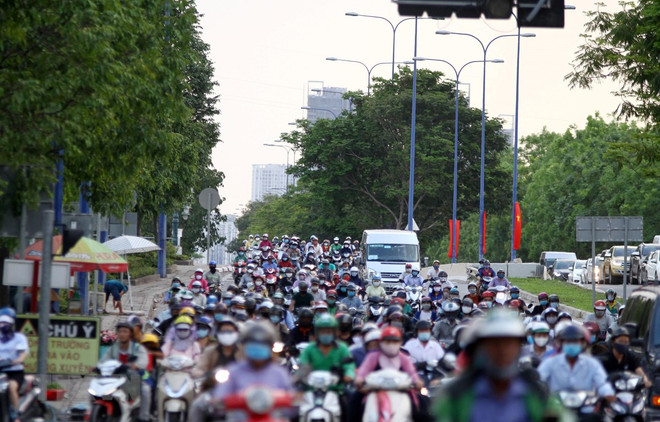HCM City (VNA) – Ho Chi Minh City is carrying out multiple methodsand programmes to reduce air pollution and CO2 emissions in its aim to create a"clean, green and beautiful" city.
Nguyen Thi Thanh My, deputy director of the city Department of NaturalResources and Environment, said that environmental programmes implemented since2016 aim to reduce 70 percent of the total volume of emissions by transport.
The department has called on the public to use public transport instead ofindividual vehicles and to use E5 bio-fuel, a mix of RON 92 (95 percent) andbio-fuel ethanol (5 percent), which has replaced RON 92 and co-exists with A95.
Bui Hoa An, deputy director of the city Department of Transport, said thedepartment has worked with many transport enterprises to replace old pollutingbuses and put 1,680 new buses into use on 52 streets.
Of the new buses, 500 use compressed natural gas (CNG) that is moreenvironmentally friendly. The number of buses with CNG accounts for 20 percentof the city’s total buses of 2,595. They do not emit dust and smoke and save 30percent to 40 percent of fuel.
The Department of Transport is continuing to build more transportinfrastructure, including the metro line No 1, an underground tunnel at AnSương Intersection, and the Thu Thiem Bridge 2, as well as upgrades of Chu Yand Kenh Te bridges to reduce traffic congestion and emissions.
In May, the department worked with the Vietnam Automobile ManufacturersAssociation and the transport ministry's Institute of Transport Science andTechnology to set up eight sites to test free of charge emissions from people'smotorbikes.
An said that testing emissions was needed because many people did not keeptheir older motorbikes maintained, leading to double the volume of emissionscompared to new motorbikes.
The Department of Natural Resources and Environment has installed two automaticair monitoring stations equipped with modern devices worth 495 billion VND (21million USD) to replace the manual air monitoring systems, which took more timeto analyse samples and did not update indexes and figures for the public.
The two stations are located at Saigon Hi-tech Park in the eastern part of thecity and Binh Tan Educational Sup-department in the city’s western area. Thesesystems provides data for a five minute period, and are expected to helpcontrol air pollution, said My of the Department of Natural Resources andEnvironment.
The department plans to install 16 more air monitoring stations at streets,residential areas and industrial parks by 2030. The data will be used to issuewarnings and make proper plans to resolve problems related to air pollution.
Reports from environmental monitoring stations at Hang Xanh Interchange, DienBien Phu street, and An Suong intersection show that emissions have fallen by80 percent of the targeted plan, including 40 percent for Co2, nearly 30 percentfor hydrocarbon, and nearly 90 percent for NOx. However, total volume of emissionsfrom vehicles is still high compared to figures in 2016.
An of the transport department said the department will continue increasing thenumber of buses with CNG and plan transport infrastructure toward lower carbonand greenhouse gas emissions.
According to the Ministry of Natural Resources and Environment, the city is oneof the localities with largest greenhouse gas emissions in the country, with 38.5million of tonnes of CO2, accounting for nearly 16 percent of the country’stotal emissions. Of the number, emissions from vehicles account for 45 percent.
In June, HCM City had about 8.5 million vehicles, including 7.8 millionmotorbikes. The number of motorbikes is expected to increase to 9 million bythe end of this year, releasing nearly 17 million tonnes of carbon, hydrocarbonand NOx. The volume is expected to increase to more than 44 million tonnes by2030 if the city does not implement solutions to reduce emissions.
According to the HCM City Respiratory Society, vehicle emissions containsubstances that cause acute respiratory diseases and blood conditions, and areespecially harmful to chikdren and the elderly. NOx exists in the air for along time, leading to acid rain, which damages plants and land./.






























